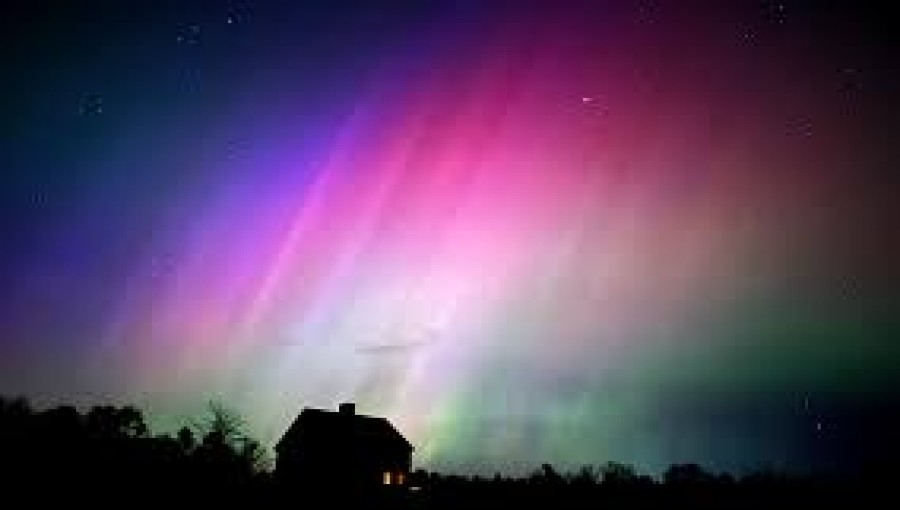An intense solar storm struck Earth on Monday, raising the possibility of the northern lights being visible much further south than usual, according to the US National Oceanic and Atmospheric Administration (NOAA). The agency reported that the geomagnetic storm reached a level four on a scale of five, starting from 1500 GMT, and could persist for several hours.
NOAA stated that this severe geomagnetic storm might allow the aurora borealis to be seen as far south as Alabama and northern California in the United States. The solar storm was caused by coronal mass ejections (CMEs), which are large explosions of particles from the Sun that can disrupt Earth's magnetic field upon arrival.
Astrophysicist Eric Lagadec from the Cote d'Azur Observatory in France noted the increased visibility of auroras, speculating that they could be visible after nightfall. Meanwhile, NASA astronaut Matthew Dominick shared a striking photo of the aurora borealis from the International Space Station.
However, solar storms can also have negative impacts, such as disrupting high-frequency communications, interfering with satellites, and overloading power grids. Operators of critical infrastructure have been alerted to mitigate these risks.
This event follows a similar occurrence in May, when the strongest geomagnetic storms in 20 years illuminated the night skies across the United States, Europe, and Australia at unusually low latitudes. Such solar activity is on the rise as the Sun approaches its peak in its 11-year cycle.































Comment: